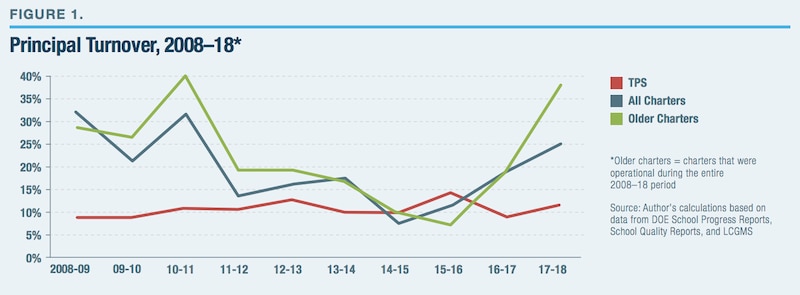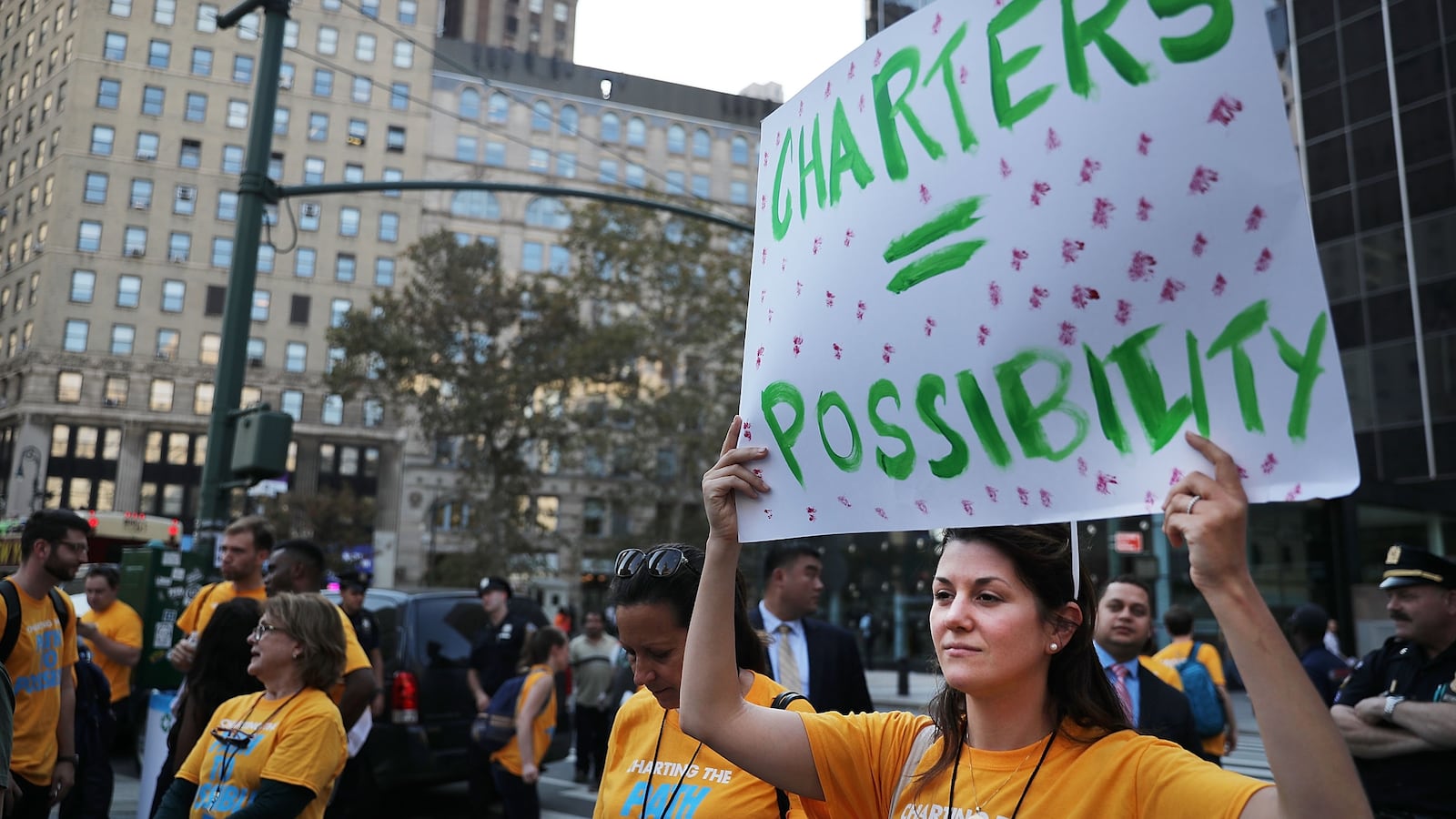As the principal at Renaissance Charter School, Stacey Gauthier’s job extends well beyond supervising teachers. She manages fundraising, lobbies elected officials to support charter schools, and even responds to issues raised by the teachers union.
“We are basically our own district,” she said, noting that the work of running an independent charter school can be a challenge without the infrastructure that comes with a school system or even a large charter network.
Despite that heavy workload, Gauthier has stayed in her role for 11 years, making her an outlier among charter principals. According to a first-of-its-kind report released earlier this month by the Manhattan Institute, a conservative-leaning think tank, the city’s charter schools generally churn through principals at a much higher rate than traditional district schools.
Last school year, 25 percent of the city’s charter school principals were new, more than double the turnover rate at district schools. That level of turnover represents something of a paradox: Studies show principal turnover can hurt student achievement, but research has also shown the city’s charter schools generally have higher state test scores than district schools do.
“If the research is right” about the consequences of principal turnover, said Marcus Winters, a Manhattan Institute fellow and the report’s author, “by addressing it, [charter schools] could improve even more.”
But it’s not clear why turnover is so much higher at charter schools, which also often churn through teachers at a higher rate.
One reason could be differences in student demographics. Since charter schools enroll a greater share of low-income students and students of color than district schools on average, that could make for a more challenging environment that contributes to churn. But controlling for differences in student demographics — including proportions of English learners, students with disabilities, those coming from poor families, and race — the report found no meaningful effect on turnover.
Another possible reason: Charter principals are easier to fire than district principals who typically have more union protections. A charter principal who runs a school that is seen as low performing is easier to replace, the theory goes, explaining higher levels of turnover. But the data don’t back up that theory. Even after taking into account differences in school performance as measured by school quality reports, higher turnover “was not driven by overall school performance,” Winters found.
It’s also possible charter schools are just more difficult work environments in ways that are difficult to measure, including some schools’ adoption of a “no excuses” ethos that tells educators that a student’s life circumstances should never excuse performance issues at school. (The report does not include breakdowns of individual charter schools or networks.)

James Merriman, CEO of the New York City Charter School Center, said there could be some truth to the idea that charter schools are tougher work environments, but added that some of the turnover could be related to fierce competition for leadership talent.
“There’s such a huge supply-demand imbalance for high-quality principals,” he said.
The report includes another puzzling trend — turnover in district and charter schools fluctuates significantly over time. Over the past 10 years, turnover at district schools ranged from 8.7 to 14 percent each year. At charters, turnover ranged from 7 to nearly 34 percent. Those swings meant that in two of the last 10 years, district turnover was slightly higher than it was at charters.
Winters, the report’s author, didn’t come to a firm conclusion about why the turnover rates seemed to shift significantly from year to year.
“I left this paper with more questions than answers,” he said.

